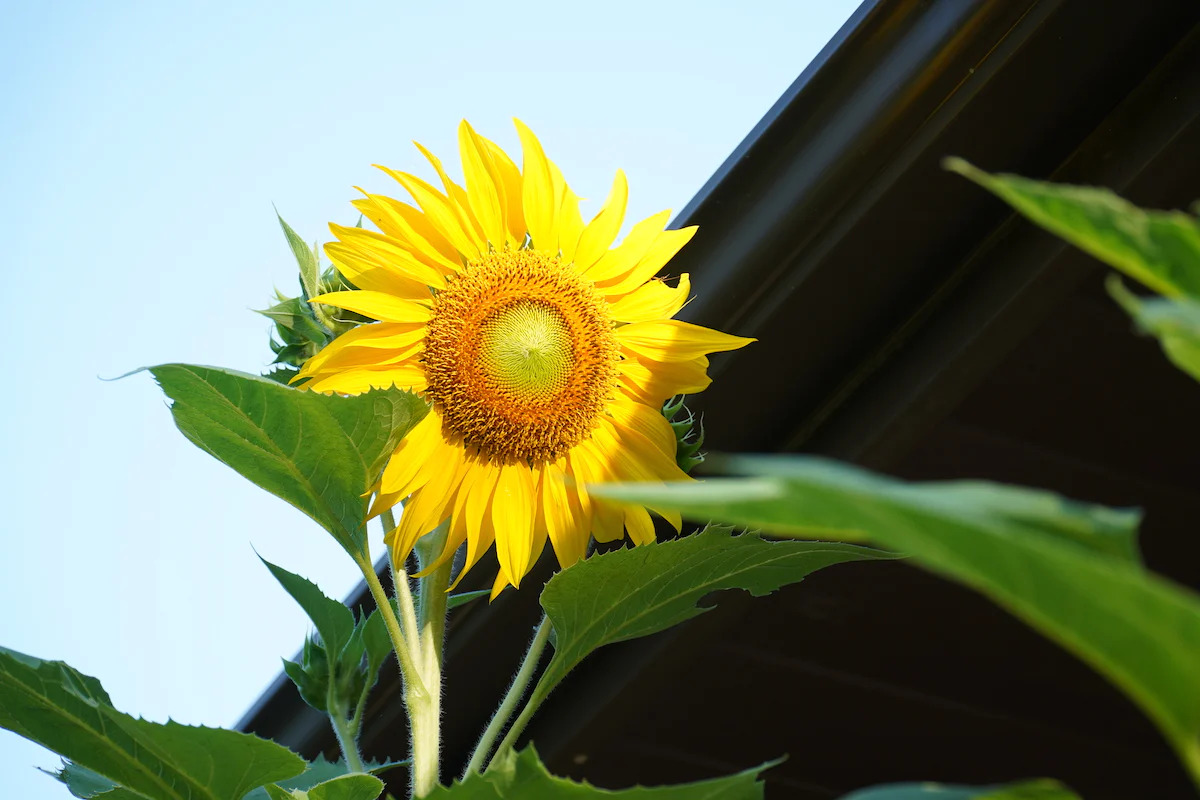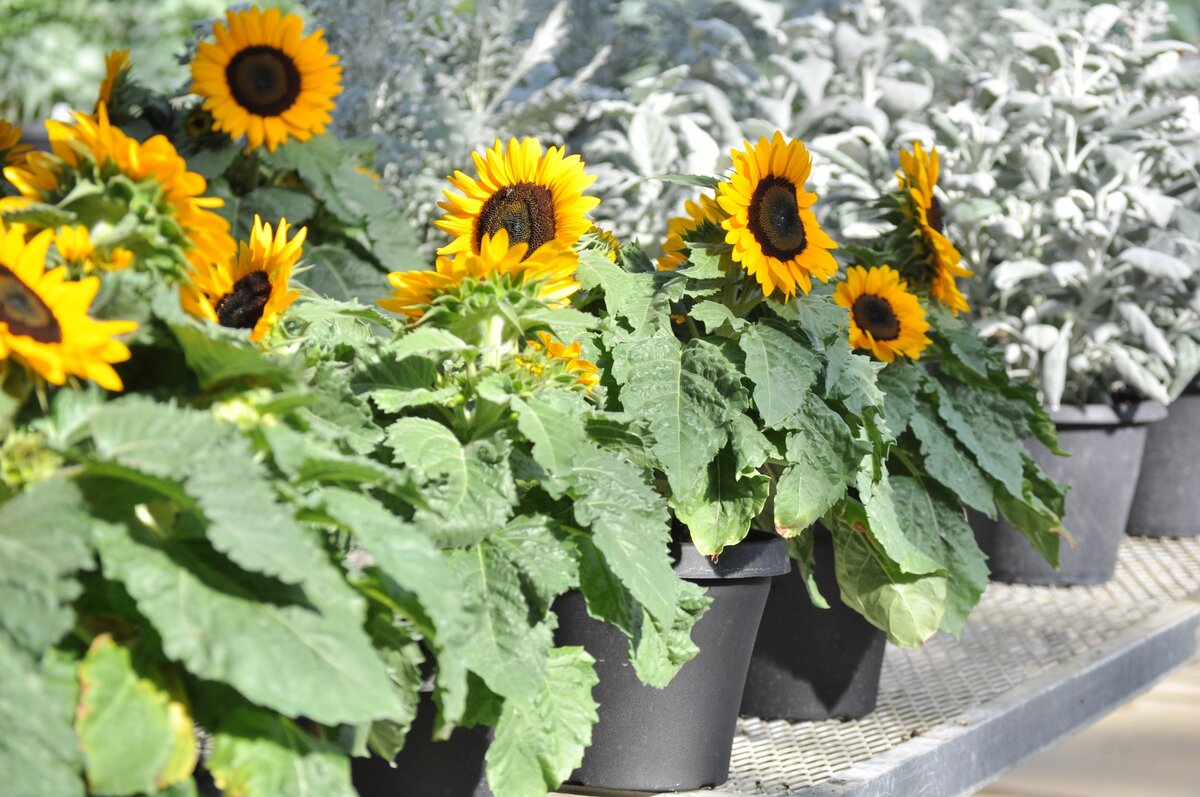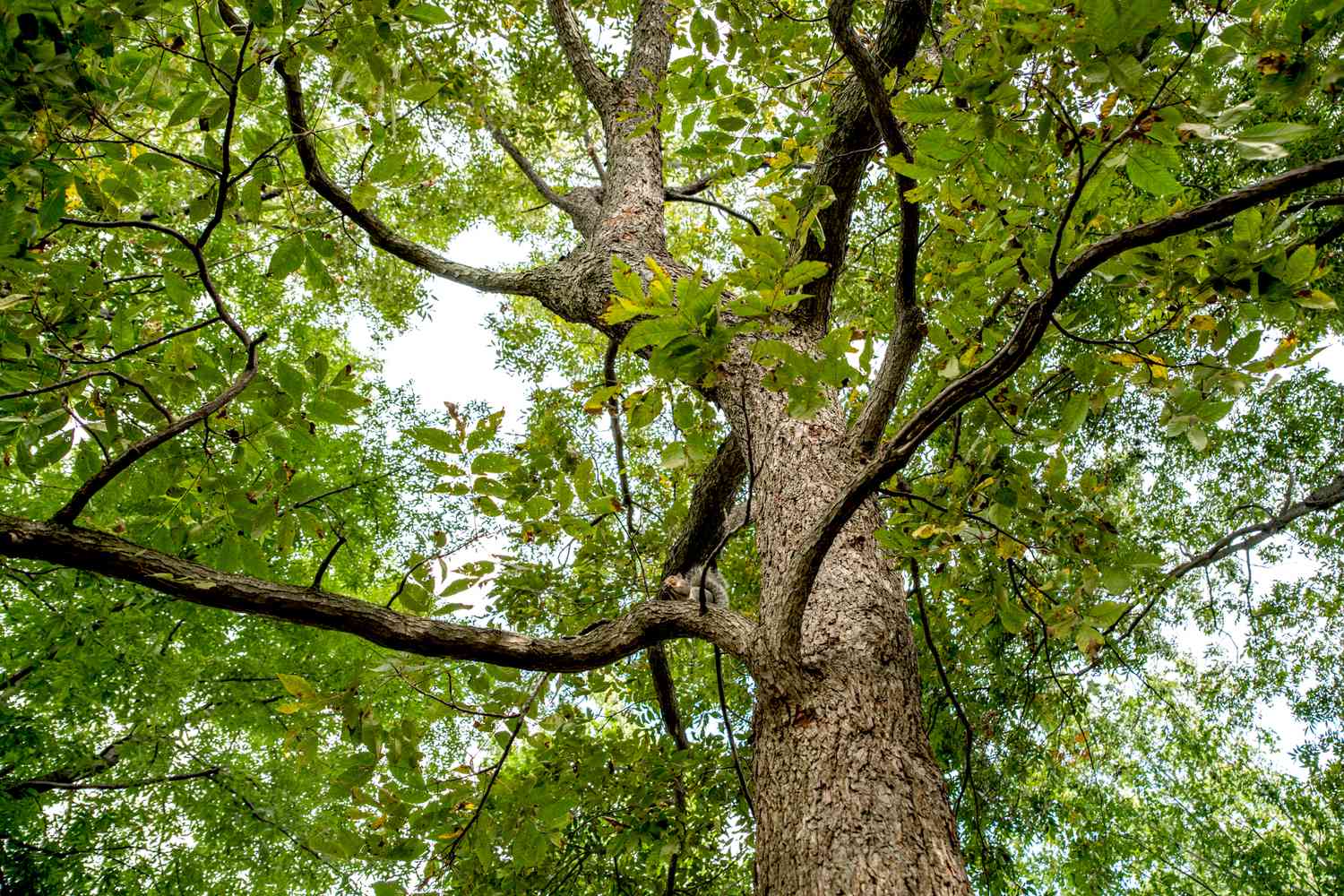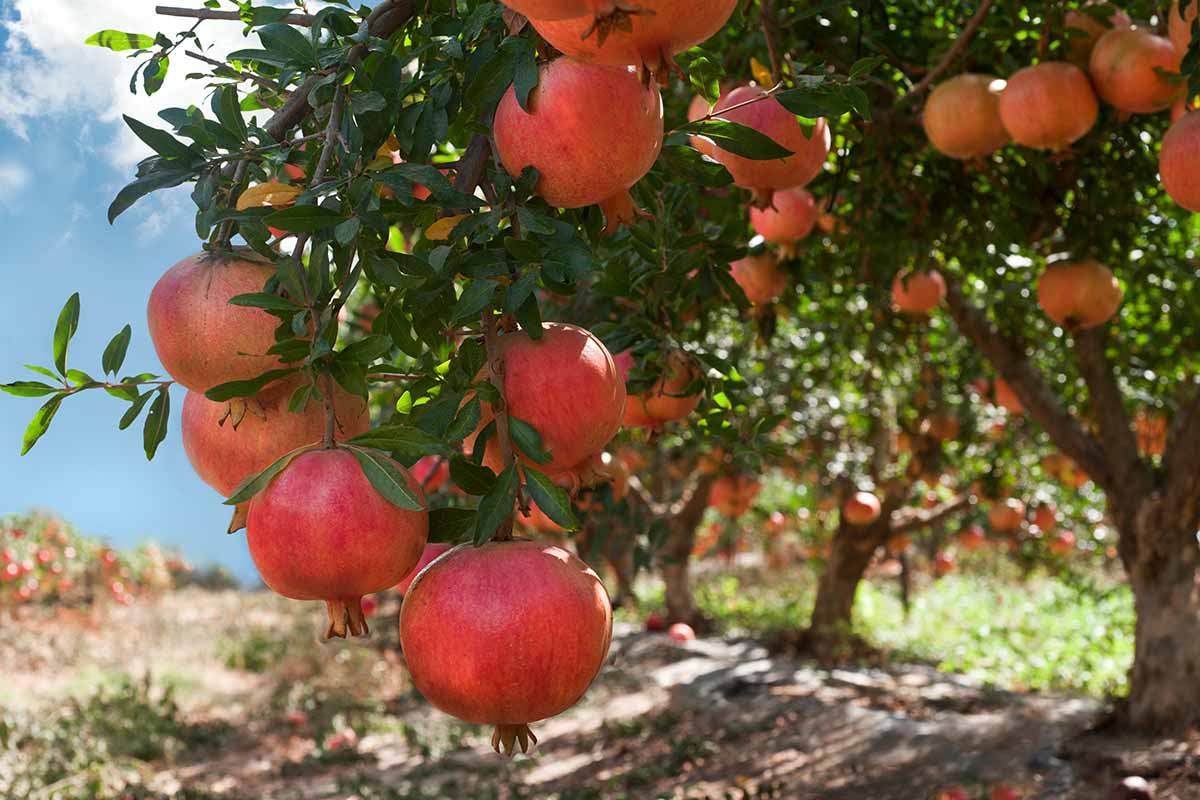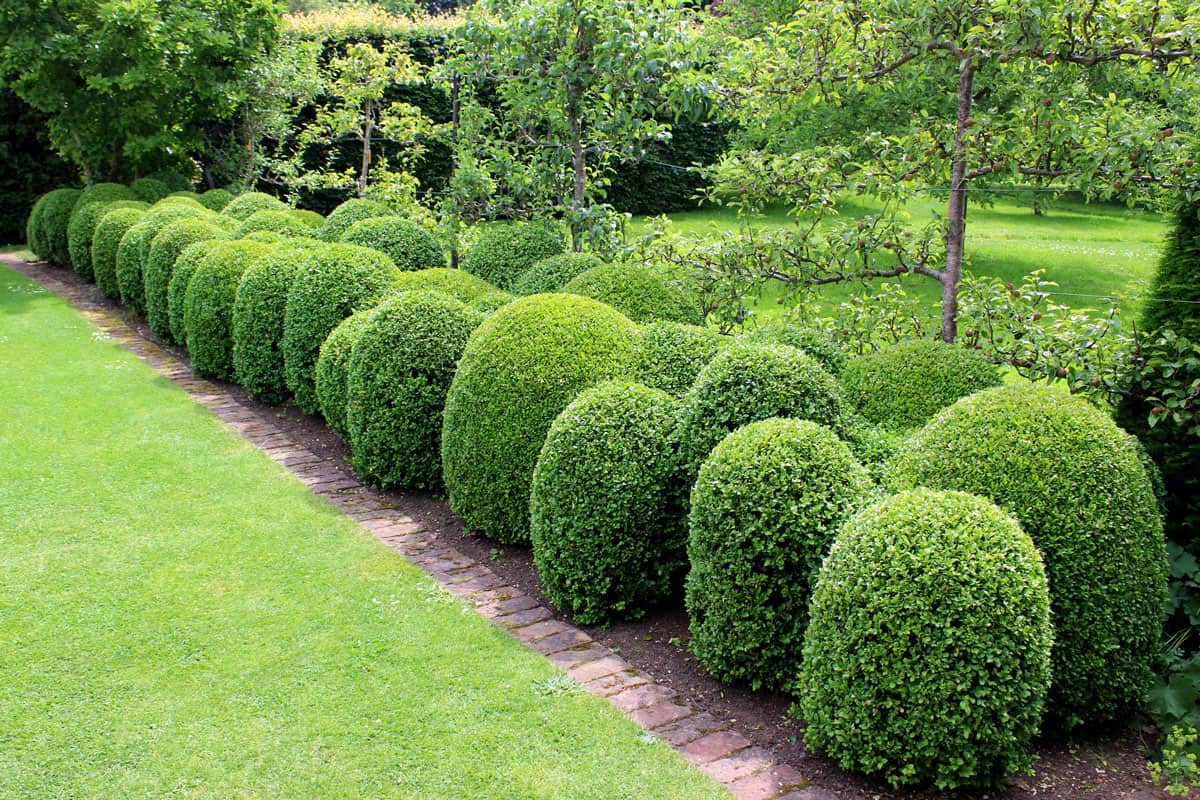Home>Types of Gardening>Ornamental Gardening>Why Do My Succulents Grow Tall
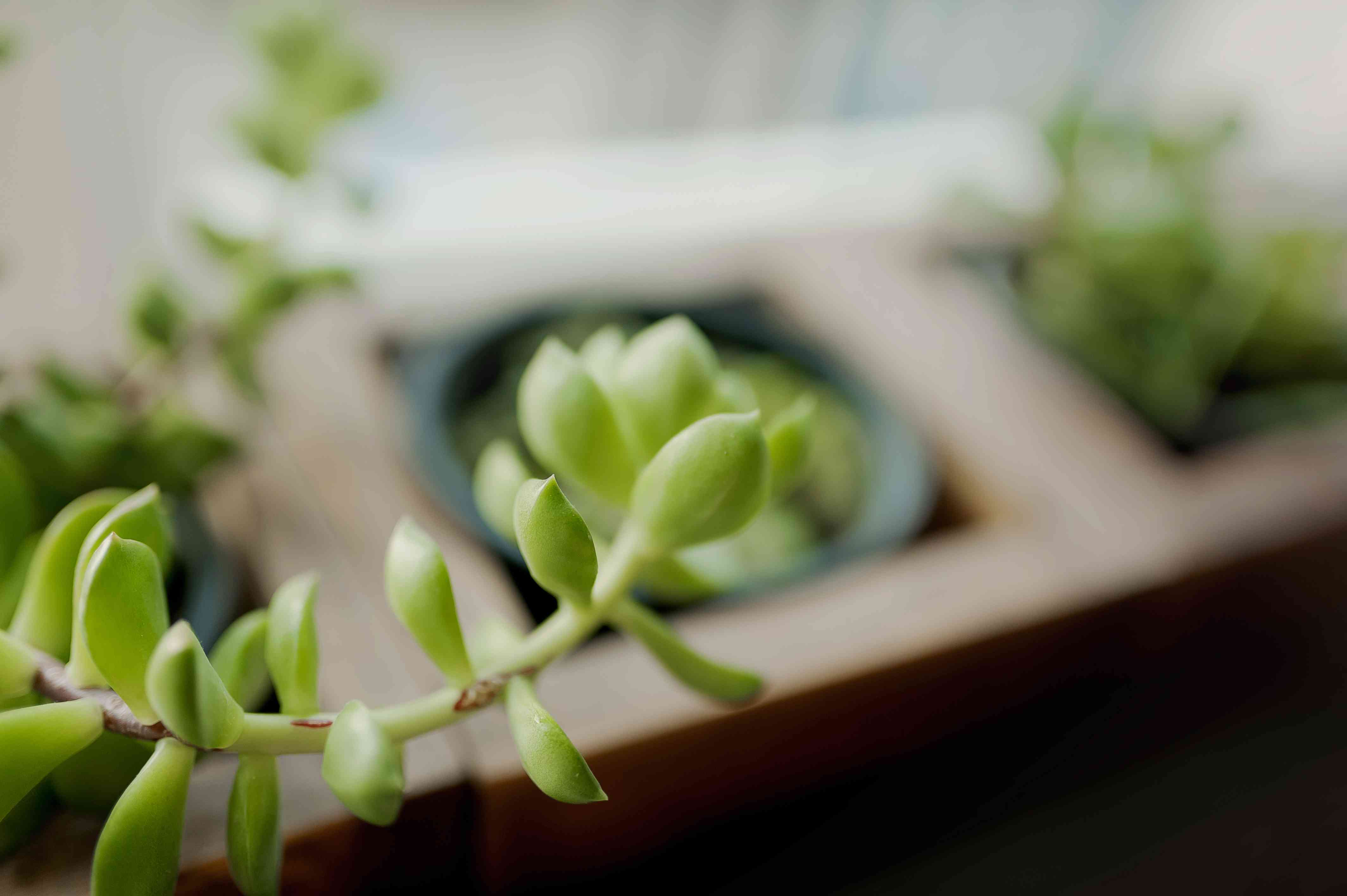

Ornamental Gardening
Why Do My Succulents Grow Tall
Modified: January 22, 2024
Learn why your succulents are growing tall and how to fix it in this comprehensive guide on ornamental gardening. Discover expert tips and advice to ensure your succulents stay healthy and compact.
(Many of the links in this article redirect to a specific reviewed product. Your purchase of these products through affiliate links helps to generate commission for Chicagolandgardening.com, at no extra cost. Learn more)
Table of Contents
- Introduction
- Understanding Succulents
- Factors that Cause Succulents to Grow Tall
- Insufficient Sunlight
- Overwatering
- Inadequate Air Circulation
- Nutrient Deficiency
- Genetic Factors
- How to Prevent Succulents from Growing Tall
- Providing Adequate Sunlight
- Adjusting Watering Habits
- Improving Air Circulation
- Proper Nutrient Supply
- Selecting Compact Succulent Varieties
- Conclusion
Introduction
Welcome to the wonderful world of ornamental gardening! If you’re new to this hobby or have recently noticed some of your succulents growing taller than expected, you may be wondering why this is happening. In this article, we will delve into the factors that can cause succulents to grow tall and what you can do to prevent it.
Succulents are a popular choice among garden enthusiasts due to their unique shapes and ability to thrive in arid climates. These plants have adapted to store water in their leaves, stems, and roots, making them highly resilient and drought-tolerant. While most succulents are known for their compact and low-growing nature, certain conditions can cause them to stretch out and become leggy.
Understanding the reasons behind the upward growth of succulents is crucial in maintaining their aesthetic appeal and overall health. By identifying the factors that contribute to their vertical growth, you can take proactive measures to ensure your succulents remain compact and vibrant.
Understanding Succulents
Before delving into why succulents may grow tall, let’s first gain a basic understanding of these fascinating plants. Succulents are a diverse group of plants that have adapted to survive in arid environments by storing water in their fleshy leaves, stems, or roots. This water storage ability allows them to endure long periods of drought, making them popular choices for xeriscaping and low-water garden designs.
Succulents come in various shapes, sizes, and colors, ranging from tiny ground-hugging rosettes to tall, branching shrubs. Their unique features, such as thick, waxy leaves and specialized water-storing tissues, make them visually striking and captivating to garden enthusiasts.
One of the most appealing qualities of succulents is their ability to propagate easily, often through the production of offsets, also known as “pups.” These new plants take root near the base of the parent plant and grow into individual specimens. This natural propagation method allows succulent enthusiasts to expand their collection without much effort.
Furthermore, succulents are renowned for their low-maintenance nature. They require minimal watering and can withstand periods of neglect, making them ideal for busy individuals or those with limited gardening experience.
However, despite their resilience, succulents are not entirely impervious to environmental factors that can lead to vertical growth. Understanding these factors is key to maintaining the desired compact and attractive form of these plants. Now, let’s explore the various reasons why your succulents may be growing tall.
Factors that Cause Succulents to Grow Tall
Several factors can contribute to the vertical growth of succulents, detracting from their natural compact and aesthetically pleasing form. It is important to understand these factors in order to address them effectively. Let’s take a closer look at the main culprits:
- Insufficient Sunlight: Succulents thrive in bright, indirect sunlight. When they don’t receive enough light, they may stretch out in search of more rays. This stretching is known as etiolation, and it results in leggy and elongated plants.
- Overwatering: Succulents are adapted to survive in dry conditions and have low water requirements. When they are overwatered, the soil becomes saturated, leading to root rot and weak growth. The lack of oxygen in the soil can cause succulents to grow taller to escape the damp conditions.
- Inadequate Air Circulation: Good airflow is crucial for maintaining the health of succulents. When they are confined to spaces with poor ventilation, such as overcrowded pots or indoor environments lacking fresh air, succulents can grow taller as they stretch out to reach for better airflow and reduce the risk of fungal diseases.
- Nutrient Deficiency: Succulents have specific nutritional requirements, and a lack of essential nutrients can weaken their growth. Insufficient supply of nutrients like nitrogen, phosphorus, and potassium can cause succulents to elongate in an attempt to access more nutrients from the environment.
- Genetic Factors: Some succulent species naturally have more elongated growth habits. Certain varieties may naturally grow tall and are genetically programmed to do so. While you may still be able to influence their growth to some extent, their inherent growth patterns may make them prone to stretching out.
These factors can act independently or in combination, leading to succulents growing tall. Identifying the specific cause or causes in your particular situation is essential in implementing the appropriate solutions. In the next sections, we will discuss preventive measures to ensure your succulents remain compact and beautiful.
Insufficient Sunlight
Succulents are sun-loving plants that require bright, indirect sunlight to thrive. When they do not receive adequate light, they may start to grow tall as they stretch towards the nearest light source. This phenomenon, known as etiolation, results in leggy and elongated succulents that can appear unattractive.
To prevent insufficient sunlight from causing your succulents to grow tall, it is important to provide them with the right amount of light. Here are some tips to ensure your succulents receive optimal sunlight:
- Outdoor Placement: Place your succulents in areas where they can receive at least 6 hours of indirect sunlight per day. South-facing windowsills, balconies, or outdoor garden beds are ideal locations as they often receive ample sunlight throughout the day.
- Indoor Lighting: If you are growing succulents indoors, supplementing natural light with artificial grow lights can help provide the required amount of light. Look for full-spectrum grow lights specifically designed for plants to mimic natural sunlight. Position the lights close to the succulents to ensure they receive adequate intensity.
- Rotate Regularly: To ensure even growth, rotate your succulents every few weeks. This will prevent them from leaning towards one side in pursuit of light. Rotating the plants allows all sides to receive adequate light exposure, resulting in more balanced growth.
- Monitor Light Levels: Use a light meter or smartphone app to measure the amount of light your succulents are receiving. Different species have varying light requirements, so being aware of the light levels will help you determine if adjustments need to be made.
By providing sufficient sunlight, you can prevent your succulents from growing tall and encourage compact, healthy growth. However, be cautious not to expose them to intense, direct sunlight for extended periods, as this can scorch their leaves and cause damage. Striking the right balance is key to ensuring their overall well-being.
Overwatering
Overwatering is one of the most common mistakes when caring for succulents, and it can lead to various issues, including the tall and leggy growth of these plants. Succulents have adapted to survive in arid conditions and have low water requirements. When they are consistently given more water than they need, their roots become waterlogged, and the soil remains constantly damp.
This excess moisture can cause root rot, which hampers the succulent’s ability to absorb nutrients and water properly. As a result, the plant may grow taller as it seeks to escape the overly wet soil and improve its chances of survival.
To avoid overwatering your succulents and prevent them from growing tall, follow these guidelines:
- Water Sparingly: Succulents have adapted to store water in their leaves, stems, or roots, enabling them to endure periods of drought. Only water your succulents when the top inch of the soil is dry, and be sure to allow excess water to drain away.
- Use Well-draining Soil: Plant your succulents in a well-draining soil mixture specifically formulated for cacti and succulents. This type of soil allows excess water to quickly drain away, reducing the risk of overwatering and root rot.
- Choose the Right Container: Plant your succulents in containers with drainage holes to ensure proper water drainage. If you have a decorative container without drainage holes, consider using a nursery pot with drainage and placing it inside the decorative container.
- Be Mindful of Seasonal Changes: During the cooler months or when succulents are in their dormant phase, they require even less water. Adjust your watering frequency accordingly to avoid overwatering.
By adopting proper watering practices, you can prevent the detrimental effects of overwatering and promote healthy, compact growth in your succulents. Remember that it is better to slightly underwater than to overwater these plants, as they are more tolerant of dry conditions than excessive moisture.
Inadequate Air Circulation
Adequate air circulation is essential for the health and well-being of succulents. When succulents are grown in an environment with insufficient airflow, such as crowded pots or indoor spaces with limited ventilation, they may grow tall and leggy in an effort to reach for better air circulation and reduce the risk of fungal diseases.
Poor air circulation can create a stagnant environment that increases the chances of moisture buildup and the spread of pathogens. To prevent succulents from growing tall due to inadequate air circulation, consider the following tips:
- Proper Spacing: When planting succulents, ensure that you space them adequately according to their mature size. This allows air to circulate freely around each plant, minimizing the risk of moisture accumulation and promoting healthy growth.
- Choose an Appropriately Sized Pot: Avoid planting succulents in pots that are too large. A pot that is too big for the plant can retain excess moisture and limit airflow. Select a pot that provides enough room for the succulent’s roots while allowing air to circulate around them.
- Position Plants in Well-Ventilated Areas: Place your succulents in areas with good air movement, both indoors and outdoors. Open windows or use fans to improve airflow and prevent stagnant air around your plants.
- Avoid Overcrowding: When growing succulents indoors, avoid overcrowding them on window sills or in small spaces. Give each plant enough space to grow and allow air to flow freely around them.
By ensuring proper air circulation around your succulents, you can minimize the risk of fungal diseases and encourage compact, healthy growth. Good airflow helps to prevent excess moisture buildup and provides the succulents with the fresh air they need to thrive.
Nutrient Deficiency
Nutrients are essential for the overall growth and health of succulents. When succulents experience a deficiency in essential nutrients, such as nitrogen, phosphorus, or potassium, they may exhibit weak growth and elongation in an attempt to access more nutrients from the environment.
To prevent nutrient deficiency and discourage succulents from growing tall, it is important to provide them with the proper nutrients. Here are some tips to ensure your succulents receive the nutrients they need:
- Fertilize Regularly: Use a balanced, water-soluble fertilizer specifically formulated for succulents. Follow the instructions on the fertilizer package to provide the correct dosage. Apply the fertilizer during the growing season when the succulents are actively growing.
- Monitor Nutrient Levels: Consider conducting a soil test to assess the nutrient levels in your soil. This will help you identify any deficiencies and allow you to make necessary amendments. Soil test kits are readily available at garden centers or can be sent to professional laboratories for analysis.
- Use Organic Matter: Incorporate organic matter, such as compost or well-rotted manure, into the soil mixture when planting or repotting succulents. Organic matter improves soil fertility and provides a slow-release source of nutrients for the plants over time.
- Follow proper watering practices: Overwatering can lead to nutrient leaching, where essential nutrients are washed away from the soil. By following proper watering practices and allowing the soil to dry out between waterings, you can help retain the nutrients in the soil for the succulents to utilize.
By providing the appropriate nutrients and maintaining proper soil fertility, you can ensure your succulents have the necessary resources to thrive. A balanced nutrient supply will promote healthy growth and discourage succulents from growing tall in search of missing nutrients.
Genetic Factors
Genetics play a significant role in determining the growth habits of succulents. Some succulent species naturally exhibit more elongated growth patterns, while others have a more compact and low-growing form. These genetic factors can contribute to succulents growing tall, even under ideal growing conditions.
When it comes to genetic factors, it’s important to understand that each succulent species and variety has its own inherent growth habits. While some succulents are naturally prone to elongation, others are genetically programmed to stay more compact. It’s essential to be aware of the growth habits of the specific succulent varieties you have in your collection.
Although you may not have control over the genetic makeup of your succulents, there are still measures you can take to manage their growth:
- Pruning: Regular pruning can help maintain the desired shape of the succulent and prevent it from growing excessively tall. Trim back any elongated stems or branches to encourage bushier growth and a more compact appearance.
- Propagating Compact Varieties: If you have succulents that tend to grow tall due to their genetic makeup, consider propagating new plants from offsets or cuttings. This allows you to produce new succulents that exhibit a more compact growth habit.
- Selecting Compact Varieties: When shopping for succulents, look for compact varieties that naturally exhibit a more low-growing form. Opt for species or cultivars that are known for their compact growth habits to avoid having to deal with excessive stretching and elongation.
- Control Growing Conditions: While genetic factors influence growth, environmental conditions can also have an impact. By providing optimal conditions, such as adequate sunlight, well-draining soil, and proper watering, you can help minimize the impact of genetic tendencies towards tall growth.
It’s important to remember that while genetic factors influence the growth habits of succulents, they can still be influenced to some extent by environmental conditions and proper care. By selecting and managing your succulents appropriately, you can promote a more compact and visually appealing growth habit.
How to Prevent Succulents from Growing Tall
Preventing succulents from growing tall involves addressing the underlying factors that contribute to their elongation. By implementing the following preventive measures, you can maintain the compact and attractive form of your succulents:
- Providing Adequate Sunlight: Ensure that your succulents receive the right amount of sunlight. Place them in locations that offer at least 6 hours of indirect sunlight per day. If growing indoors, use artificial grow lights to supplement natural light and mimic the intensity and spectrum of sunlight.
- Adjusting Watering Habits: Avoid overwatering your succulents, as excess moisture can lead to weak growth and elongation. Water them only when the top inch of the soil is dry, and use a well-draining soil mixture specifically formulated for succulents.
- Improving Air Circulation: Promote proper airflow around your succulents by spacing them adequately and avoiding overcrowding. Choose pots with drainage holes and position them in well-ventilated areas to prevent stagnant air and reduce the risk of fungal diseases.
- Proper Nutrient Supply: Fertilize your succulents regularly with a balanced, water-soluble fertilizer formulated for succulents. Monitor nutrient levels in the soil and consider incorporating organic matter to improve soil fertility and provide a slow-release source of nutrients.
- Selecting Compact Succulent Varieties: Choose succulent species or cultivars known for their compact growth habits. By selecting compact varieties from the beginning, you can minimize the chances of dealing with excessive elongation.
By implementing these preventive measures, you can encourage your succulents to grow in a compact and visually appealing manner. Remember to pay attention to the specific needs of each succulent species and adjust your care accordingly to maintain their optimal growth and health.
Providing Adequate Sunlight
Adequate sunlight is crucial for the healthy growth and development of succulents. These plants have evolved to thrive in bright, indirect sunlight, and insufficient light can cause succulents to grow tall and leggy as they stretch in search of more light. To prevent this and encourage compact growth, it is important to provide your succulents with the right amount of sunlight.
Here are a few tips to ensure your succulents receive adequate sunlight:
- Outdoor Placement: Choose a suitable outdoor location for your succulents, like a south-facing windowsill, balcony, or garden bed. These spots usually receive ample sunlight throughout the day. However, be mindful of extreme heat and intense direct sunlight, which can scorch the leaves. If necessary, provide some shade during the hottest part of the day.
- Indoor Lighting: If you are growing succulents indoors or in areas with limited natural light, supplement with artificial grow lights. Full-spectrum LEDs or fluorescent lights designed for plants can provide the necessary light intensity and spectrum. Place the lights close to the succulents, mimicking the intensity of sunlight.
- Rotate Regularly: To ensure even growth, rotate your succulents every few weeks. This allows all sides of the plant to receive adequate light exposure and prevents them from leaning towards a specific light source.
- Monitor Light Levels: Different succulent species have varying light requirements. Use a light meter or smartphone app to measure the light levels your succulents are receiving. This will help you determine if they are getting enough light or if you need to adjust their placement.
Remember, striking the right balance is crucial. While succulents require ample light, prolonged exposure to intense sunlight can scorch their leaves. Observing your succulents and providing them with the appropriate amount of light will help them maintain their natural compact form and vibrant appearance.
Adjusting Watering Habits
Proper watering is essential for the health and growth of succulents. Incorrect watering practices, such as overwatering, can lead to weakened growth and elongation of the plants. To prevent succulents from growing tall and encourage compact growth, it is important to adjust your watering habits and provide the right amount of moisture.
Here are some tips to help you adjust your watering habits for succulents:
- Water Sparingly: Succulents have adapted to thrive in arid environments and have low water requirements. Allow the top inch of the soil to dry out completely before watering again. Overwatering can lead to root rot and weak growth, causing succulents to stretch out in an attempt to escape the overly moist conditions.
- Use Well-draining Soil: Plant your succulents in a well-draining soil mixture specifically formulated for cacti and succulents. This type of soil allows excess water to quickly drain away, reducing the risk of overwatering and waterlogged roots.
- Choose the Right Container: Select pots with drainage holes to ensure proper water drainage. If you have decorative containers without drainage holes, consider using a nursery pot with drainage and placing it inside the decorative container. This allows excess water to escape, preventing water accumulation at the bottom of the container.
- Be Mindful of Seasonal Changes: Succulents have different growth patterns throughout the year. During the cooler months or when succulents are in their dormant phase, they require less water. Adjust your watering frequency accordingly to avoid overwatering during these periods.
Remember, it is better to underwater succulents than to overwater them. These plants are adapted to withstand drought and can tolerate dry conditions better than excessive moisture. By adjusting your watering habits and providing the right amount of water, you can encourage compact growth and prevent succulents from elongating unnecessarily.
Improving Air Circulation
Adequate air circulation is essential for the health and well-being of succulents. Poor air circulation can lead to stagnant environments, increased humidity, and the spread of fungal diseases. When succulents are grown in areas with inadequate airflow, they may grow tall and leggy as they stretch in search of better ventilation.
To prevent succulents from growing tall due to inadequate air circulation, there are several measures you can take to improve airflow:
- Spacing: Properly space your succulents when planting or arranging them. Allow sufficient distance between plants to ensure they have room to grow and air can circulate freely around them. Overcrowding can inhibit airflow and create a more humid microclimate.
- Pot Selection: Choose pots with adequate drainage holes that allow excess water to drain away and air to flow through the soil. This helps prevent waterlogged soil and promotes proper air circulation around the roots.
- Placement: Position your succulents in well-ventilated areas. Select outdoor spots with good air movement, such as patios or breezy corners of the garden. Indoors, place succulents near windows or use fans to improve airflow and promote ventilation.
- Avoid Overcrowding: When growing succulents indoors, avoid overcrowding them in one location, such as a windowsill. Give each plant enough space to grow and enough airflow to circulate around it.
By providing proper air circulation, you can help prevent the development of stagnant environments where diseases can thrive. Adequate airflow reduces excess humidity and minimizes the risk of fungal infections, helping your succulents maintain their compact and healthy form.
Proper Nutrient Supply
Nutrients are essential for the healthy growth and development of succulents. Adequate nutrient supply ensures that these plants have the resources they need to flourish and maintain a compact form. When succulents experience a deficiency in essential nutrients, they may exhibit weak growth and elongation as they stretch in search of more nutrients from the environment.
To prevent nutrient deficiency and encourage compact growth in succulents, it is important to provide them with the proper nutrients. Here are some tips to ensure your succulents receive the nutrients they need:
- Fertilize Regularly: Use a balanced, water-soluble fertilizer specifically formulated for succulents. Follow the instructions on the fertilizer package to provide the correct dosage. Apply the fertilizer during the growing season when the succulents are actively growing. Avoid over-fertilization, as this can lead to salt buildup and damage the plants.
- Monitor Nutrient Levels: Consider conducting a soil test to assess the nutrient levels in your soil. This will help you identify any deficiencies and allow you to make necessary amendments. Soil test kits are readily available at garden centers or can be sent to professional laboratories for analysis.
- Use Organic Matter: Incorporate organic matter, such as compost or well-rotted manure, into the soil mixture when planting or repotting succulents. Organic matter improves soil fertility and provides a slow-release source of nutrients for the plants over time.
- Follow Proper Watering Practices: Overwatering can lead to nutrient leaching, where essential nutrients are washed away from the soil. By following proper watering practices and allowing the soil to dry out between waterings, you can help retain the nutrients in the soil for the succulents to utilize.
Remember that succulents have specific nutritional needs, and providing them with the proper nutrients is essential for their overall health and growth. By fertilizing appropriately and ensuring nutrient availability, you can promote compact growth and ensure your succulents have the resources they need to thrive.
Selecting Compact Succulent Varieties
When it comes to preventing succulents from growing tall, selecting compact varieties from the start can make a significant difference. Some succulent species and cultivars naturally exhibit more compact growth habits, making them less prone to elongation. By choosing these varieties, you can minimize the chances of dealing with excessive stretching and encourage a more visually pleasing and manageable form for your succulents.
Here are some tips for selecting compact succulent varieties:
- Research: Take the time to research different succulent species and cultivars. Look for information on their growth habits and characteristics. Compact varieties are often referred to as “dwarf” or “miniature,” so keep an eye out for these keywords during your search.
- Check Mature Size: Pay attention to the expected mature size of the succulent. Different species and cultivars have varying growth patterns, so be sure to choose ones that fit the space available and align with your desired aesthetic.
- Observe in Nurseries: Visit nurseries or succulent specialty stores to see the plants in person. Nurseries often label varieties with their growth habits, making it easier to identify compact options.
- Seek Recommendations: Ask fellow succulent enthusiasts or consult with knowledgeable gardeners for recommendations on compact succulent varieties. They may be able to provide insights based on their personal experiences and help you choose suitable options for your collection.
By selecting compact succulent varieties, you can minimize the need for constant pruning or maintenance to keep the plants at a manageable size. These varieties are specifically bred or selected for their natural compactness, making them ideal choices for those who prefer a tidy and visually appealing succulent garden.
Conclusion
Understanding the factors that contribute to succulents growing tall is crucial for maintaining their desired compact and attractive form. Insufficient sunlight, overwatering, inadequate air circulation, nutrient deficiency, and genetic factors can all play a role in causing succulents to stretch out and become leggy. By addressing these factors, you can prevent succulents from growing tall and encourage healthy, compact growth.
Providing adequate sunlight is vital for succulents to thrive. Ensure they receive at least 6 hours of indirect sunlight per day or supplement with artificial grow lights for indoor succulents. Adjusting watering habits is also important, as succulents have low water requirements and are prone to overwatering. Allow the soil to dry out between waterings and use well-draining soil to prevent root rot.
To improve air circulation, give your succulents enough space and avoid overcrowding. Choose pots with drainage holes and position them in well-ventilated areas. Furthermore, ensure your succulents receive proper nutrition by fertilizing regularly and incorporating organic matter into the soil. Finally, selecting compact succulent varieties can prevent the need for constant pruning and maintenance.
By implementing these preventive measures, you can enjoy a stunning collection of succulents that remain compact and visually appealing. Each succulent variety has unique requirements, so be sure to research and provide the optimal conditions for your specific plants. With proper care, your succulents will continue to thrive and bring beauty to your ornamental garden.
